My grandparents had a farm in Georgia, where they raised nearly everything they needed. I remember my grandmother telling me that they bought coffee, flour, and sugar.
They raised most everything else. On weekends and in the summer, I helped with the farm chores. Eventually, it was just my grandmother, but they made it seem so easy.
I was young and naïve when I began my first homestead. It seemed so straightforward; plant a garden and buy a few animals, right? I made a lot of mistakes—a lot of mistakes. Hopefully, I can save you from a few of them. Here are my top tips:
Choose Your Land Carefully
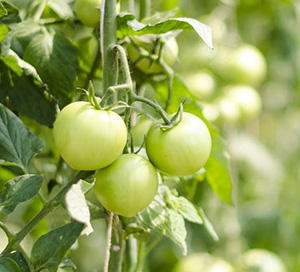
My first problem was that I purchased five acres that already had a chicken house, pig pen and other fenced areas, and planned to use them as they were (with a few upgrades along the way).
I mostly chose it because it had a house that would serve my young family well. I should have paid more attention to the suitability of the soil for my garden, and how much repair was needed on the fencing.
I rented a tiller to plow up my garden. I had done it many times before and didn’t expect any problems.
When I began to till the soil, I discovered how hard it was; solid Texas clay, with rocks—lots of rocks!
It took a full day of hard work to till a tiny little plot. And it was not a very fertile plot. I fought that soil constantly. The next time, I analyzed the soil more than the house.
Team Up With The Neighbors
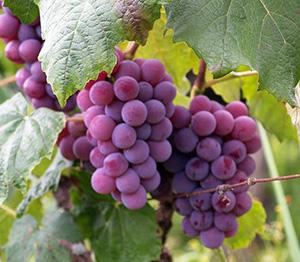
The second year, I began tilling my little plot on a day when the neighbor was plowing his (with a tractor). I didn’t plan it that way, but it worked out nicely for me.
At lunch, while I was still struggling, he came over and offered to plow it for me when his work was done.
His tractor plowed a much larger garden area in a very short time.
He became someone I could rely on for advice and help, and I gladly returned the favor when I could.
Related: Who Would You Choose as Your SHTF Companion?
Don’t Try To Do Everything At Once –Grow Slowly
You probably feel some urgency to get everything done. I know I do. But experience has taught me that life is easier if I learn one new thing at a time.
Once your garden is established, don’t rush to add animals immediately. Instead, learn to can, dehydrate and preserve your produce.
When you begin to add animals, consider how much work each will require. In my experience, chickens and rabbits are the easiest. Larger animals require more work and strength.
I keep my chickens in a coop with a fenced yard space, but my grandmother let her chickens have free range (watch out for local dogs and other predators, if you try this).
Geese do well in free range, but you end up having to look for the eggs sometimes. Geese will stand up to a dog or other predator, and attack if necessary. I have lost chickens to local dogs, but never a goose.
Use The Small Animal Advantage
One of the reasons that I prefer small animals is they are easier to catch and contain when they get loose. And they do get loose. My pig experience was the end of large animals for me. I had a couple of pigs that learned they could dig under the fence.
One day I looked out my front window to see the two ugliest dogs I had ever seen. A second look and I realized they were my half-grown pigs. I chased them back into the pen and repaired the fence.
But, every few days, they would manage to dig out again in a new spot. Pigs love their freedom. I eventually decided to butcher them a little early because I knew that I wasn’t going to win that war forever.
Large animals can be a lot more strenuous, especially as we age. And those pigs were bigger and smarter than me.
Over the years, I have raised chickens, geese, rabbits, pigs, goats, and sheep. I never owned a cow, but my grandparents had several. I was taught to feed and milk the cows, but I was always a little afraid of them. Those cows don’t hesitate to kick if they don’t like you.
My sisters and I watched and laughed one summer as my grandparents chased the cows out of the garden nearly every night. They would fling their arms and yell a few words we thought they didn’t know while the cows trampled all their perfect produce.
We thought the chase and all the yelling was funny. Now that I am older, I realize it was exhausting for my grandparents and destroyed the garden. When a cow, or pig, wants the vegetables just ripening in your garden, they will fight you for them.
Related: Top 9 Animals to Raise in a Post Apocalypse World
Use Tools To Do The Heavy Lifting
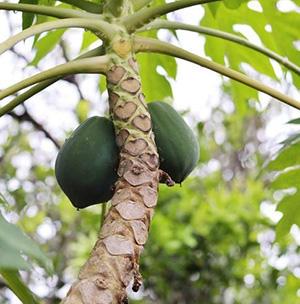
When I first started homesteading, I rented a tiller because I didn’t own a tractor. I did everything myself because I couldn’t afford to hire help. However, my neighbor had a much larger garden and a tractor that sat in the barn most of the time.
He was happy to help me with plowing and other heavy jobs in exchange for help with harvesting in the fall. Local teenagers were also glad to help when I could afford them. All homesteaders face the same problems. Teaming up is to both your advantage, so don’t be shy about asking for help.
Allow Yourself To Cheat If Needed
There is no rule that says you have to produce everything to call yourself a homesteader. Of course, we all want to achieve that goal, but sometimes it is OK to cheat.
One of my cheats is that I purchase chicken and rabbit feed. I know that I someday may not be able to find the right feeds for purchase, but I am always fully stocked.
Also, I keep a lookout for what my neighbors are doing, looking for produce that I can trade or purchase. Sometimes I sell fruit or vegetables to the local farm stand and use the cash to buy things that make my life easier.
How I Have Adapted As I’ve Aged
The years have gone by quickly, and I have had some health problems along the way. Weeding the garden is more of a chore, and I get dizzy if I lean over too long. My husband has built me some raised beds and we add a few more each year.
This is easier on my back and head, and grows more in a smaller space. We can fertilize and customize each bed for the plants it holds. I have experimented with hydroponics and I use an automatic watering system.
We trim our trees to be shorter, and plant dwarf trees when a good variety is available; I am too old to climb a tree.
I enjoy my homestead, but I am also lazy. I don’t want to stand in the garden for an hour or two to get everything watered when I can turn on my watering system and walk away. Even a set of sprinklers gets the work done easier. I would rather not fight with a goat or cow when I can trade for milk with a neighbor.
Well, I don’t know if this helped you. I hope it didn’t scare you away from the idea of homesteading. The good news is that you can do it. No matter your physical condition, you can set up your homestead to fit your needs.
I had a neighbor who had multiple disabilities, including a bad heart and being confined to a wheelchair, yet he gardened and raised quail, selling them to specialty markets. He was successful enough to support himself through retirement.
The bad news is that it does require work, but probably not as much as you think if you plan it right. There are times when life is very busy, but other times when you just need a few minutes to feed and water the chickens. It is all up to you. Take it slow and master each task separately. You’ll get there, faster than you think.
You may also like:
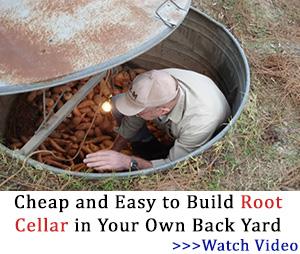 What Is the the Right Fence for Your Homestead?
What Is the the Right Fence for Your Homestead?
Backyard Projects That Might Get You Arrested (Video)
How to Make A Cool Rocket Stove For Free
How To Make Money Off Grid: Making A Living From Your Homestead

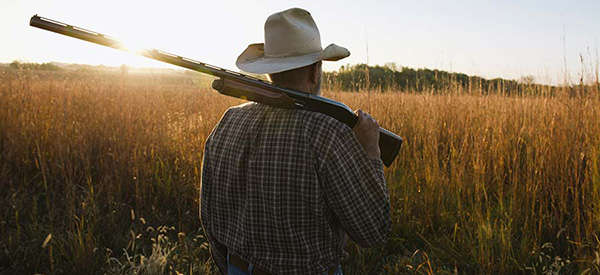




















We’ve found the same things. But one of the things you’ll find also is poorer ground is usually cheaper ground and why potential homesteaders go that route.
Was in our case….1,000ac steep, timbered mountain ground was what we could afford, not 5,000/ac bottom land….so we’ve made do….and over 35 years turned it into a real nice place.
One of the best gardening moves we made was a 20×30 hoop house with beds raised to waist high using 4″ laid cinder block. Dream to grow in (3 season), dream to work/weed/etc due to the height. We grow a tremendous amount of food in a fairly small area. We’ll be gardening into our 80’s I suspect because of that setup.
How did you make your greenhouse? I can’t picture it, but I want to do something similar. Thanks
Basically a conventional hoop house sitting on a raised block foundation, then laid 4″ block inside to make the beds. One bed around the outside walls is 32″ (about the depth you can reach back), center bed is 60″ wide, 48″ walkway all around the center bed. Built the beds first, filled with dirt using tractor front loader, added the house on top.
Google hoop house. There are many on the web. I bought my greenhouse from a local family.
This is a very good site. I plan to do some homesteading in Alabama when I retire. I am gathering the info I need to plan properly.
I’m happy to hear you’re finding the site useful. If there’s anything you need to know just go ahead and ask here; the regulars have a lot of knowledge they’ll be glad to share with you.
I’ve found that the best choice for poor rocky soil is to use raised beds. A friend has advised me that hay bales work well for this, but I haven’t tried it yet.
You might want to check and see where the hay bales came from before using them, I read somewhere about hay that was sprayed with weed killer and the chemicals leeched into the soil and killed the plants.
This post has good advise worth listening to.
I retired at 62; I’m now almost 65.
I lived in Fort Wayne, and gardened every year in my back yard.
A few months prior to retirement we bought 25 acres in the Hoosier National Forest area. I have a LARGE barn, two smaller buildings, that were used for chickens and hogs. I have a pond, about 1/3 acre, with some tasty fish living there,
15 of my 25 acres is pasture, about 8 acres are old growth woods, and the remainder is open area that’s divided into gardens, and a new orchard that I’ve planted; peaches, pears, apple, and cherry trees. I’ve also established a nice blueberry patch that I’m picking in now, and I’ve planted four grapevines just this summer.
My place came with a tractor that has a front loader, a hey fork for moving my big round bales, and I have a brush hog. And let me say this. That tractor is a God Send. There have been many times in my short time here that if I didn’t have that tractor, I’da been in some deep doo-doo! A tractor (at least with my acrage) is a MUST HAVE. Mine is a Cub Cadet 7260 w/ 4WD and has a 3 cylinder 23 HP diesel. More than enough for me.
I’ve kept one thing in mind constantly since getting my homestead: if I do just one thing every day that will improve my place, then I’ve met my goal. It has been a planning and prioritizing game for me. Gardening came first. It has worked out well so far. Now, for the first time in my life, I don’t have to worry about running out of room to grow veggies 🙂 I love it!!! I mulch my entire garden in the hay grown on my land. My neighbor is a cattle farmer. He bales it and splits the crop with me. The only weeding I have to do is in the vegatable rows themselves. The rest gets buried in hay. If a weed pops through, and they do, then I just throw more hay on and smother them. Mulching a garden is also a lot of work. But, it’s easier than trying to keep up with the weeds and tilling. Oh. I don’t till any more either. I just pull back the hay to expose the soil, make a furrow, plant, and when the plants are up and strong, I put more hay right up against the row. For me, it works great. The only time I tilled was when I broke sod. I haven’t had the problem of all the seeds in the hay taking over my garden because when things pop through the mulch, it just gets buried. My blueberry patch is mulched the same way. The soil stays moist, so there’s very little watering. Mulching is the best way (for me) to garden. How much mulch? Last year, I used 8 round bales, about a half ton each, to do the job on my two gardens. One is 80’x140, and the other is about 40’x50′. …Now you can understand why I like my tractor so much! I couldn’t move all that hay by wheelbarrow!
Like the post says, don’t try to do it all at once.
I still don’t have any animals. Chickens might happen next summer, and rabbits some time later.
My homestead is the best move my wife and I ever made. My days are full, even in the winter. I still have swiss chard, radishes, turnips, carrots, and spinach growing under make shift hoop houses. All they are is a row of tomato cages, covered with 2mil plastic drop cloths I bought at walmart. I have hay banked up on the north and west sides to shield against the wind, and when it gets into the 20’s at night, I cover them with a layer of hay, then uncover them again when the weather moderates.
Take it slow, but steady. By doing small things continually, one can accomplish much!
Homesteads are a lot of work, but it’s so rewarding to enjoy the fruit of your labor. Pure, poison free food. Fresh, clean air. The solitude is a treasure too. No city noises! Just the breeze in the trees accompanied by bird song.
“Peace! Oh this is peace! I have no need of friend to talk, or book to read; a dear Companion with me abides, within my thrilling heart He hides! The Holy Silence is His voice, I stand and listen, and rejoice!”
If you’re considering a homestead you can call your own, and you’re up to the work it’ll take, then I’d say go for it!
20 years ago at 63 12″ raised beds were great. Now I wish I had made them 36″ or possibly 40″. First the back went thanks to an 18 wheeler that used our pickup as his breaks. He was loaded with 11 tons of gravel. Now thanks to a fall in Alaska the right knee is about shot and it is very difficult to get up if I am on my knees. I found Riggs makes blue jeans with double knees so they last a lot longer than normal jeans.
I realize that things can change real fast as they did for you, GW; I know as I age I’ll have to adapt to my ability, but until then, I’ll keep doing something every day, and hopefully I can get things streamlined to an efficiency that’ll work for me in my later years.
The best to you, GW.
TheSouthernNationalist – I don’t know why anyone would spray hay bales with weed killer. Maybe straw hay bales that are meant to be used for archery, decorative use, or something similar?
Use square bales meant to be cattle/horse feed, alfalfa or similar. Stand them on end. Wrap them in plastic to keep the moisture in. Create a hollow in the top to hold enough dirt to get your plants well started, and the bale composts over the course of the season feeding your plants.
At the end of the season compost the remains of the bales, and start with fresh bales the next growing season.
That is what I was told. I haven’t tried it yet myself.
dp, straw is a byproduct of crops like wheat, barley, rye, and oats — the grains are removed for people to eat, leaving straw. The problem is most of these cereal crops are now sprayed with a weed killer called glyphosate (commonly known as RoundUp) three to five days before harvest, killing the plants so they can all be harvested at once. This also allows the weed killer to be absorbed by the dying plants (our food!) and into their roots to the soil below, so weeds won’t grow after the crops are harvested. Most of this is explained in Monsanto’s official RoundUp manual, you can view a copy at http://www.roundup.ca/_uploads/documents/MON-Preharvest%20Staging%20Guide.pdf if you’d like. Anyway, this is why straw bales are almost always contaminated with weed killer nowadays, and also the reason why I finally decided to only eat organic non-GMO certified foods.
Chris F. – Thank you for that information. I did not know that about the crops being sprayed just prior to harvest. I will do my own research as usual, but thank you for the pointer to follow.
I am well aware of the problems with round-up, as well as the lawsuits (mostly in other countries) regarding it. I won’t go into the whole GMO/round-up/agenda21 thing, because most of the members are well aware of what time it is.
My problem with organic food, is that the term “organic” only has to do with how it is grown. You can take Franken-phood (GMO) seeds, and raise them organically.
A very interesting and informative comment, Mr/Ms Chris F. – hopefully, we can look forward to more valuable input if you decide to stick around. 🙂
Chris F., I saw this with my own eyes. Last summer I was driving through some back roads of Kansas, and saw recently-harvested wheat fields. The wheat stalk “nubs” were dark brown, yet the stalks around the perimeter were varying shades of gold, brown, and green. You could tell EXACTLY where the glyphosate had been sprayed. I’d have to do some research, but I have a hunch farmers spraying wheat fields with this stuff may play a part in why so many people have wheat sensitivities and Celiac disease these days. I only buy pasta that is made in Italy, because they don’t allow glyphosate to be sprayed on wheat crops, or so I’ve read somewhere.
Thanks for the inspiration!
Try info@groasis.com they have a thing called a Waterbox.
Permits you to grown in virtually anything even in deserts.
John B.
Quasi Modo – Not sure about the Waterbox, but aquaponics looks very interesting…
https://en.wikipedia.org/wiki/Aquaponics
To deal with pigs you need an electric fence. You don’t need a Buldozer something lighter will do. It kept my pigs in. Need to check foe weeds, they can short a light fence out. I had a 2acrefarm but now live just outside a big city and have chickens in my back yard. Iam76 still heat with wood. The secret to aging is to keep moving. I am a silversmith in my retirement.
Boatman – that is probably the cheapest and best way to deal with the problem of burrowing hogs.
You could probably also just tie in and bury a foot or two of fencing along the inside of the fence line to keep them from digging out.
It works for dogs, but I never raised hogs, so I don’t know if it would work for them too.
We put rings in their snout. That keeps them from rooting around the fence. I do not know if they are still available.
Yup Graywolf12, those nose rings are still available in three different sizes at the feed store over here. We don’t raise pigs but still occasionally use them for securing cattle panels together when zip ties won’t do.
I don’t eat pork. There is no reason for me to keep hogs.
They are just an invasive species, and they tear up the ground, they eat the acorns that feed the native spcies.
So I shoot them, and I leave them to die. I won’t even touch them. They are just reservoirs of disease.
dp. I try my best not to eat Pork, but a lot of people still do. I agree with most of what you say, but your last 3 sentences are a little bit harsh. Some people down South make a sport of shooting as many feral hogs as they can, just because they are as destructive as you say. .35 Remington!
That is 100% true in Arkansas. We just hand them off to the butcherer/processor to feed the homeless.
I wear gloves, and Itry not to even touch them.
It is open season on wild hogs every day for 365 days a year.
leaving them to rot is just fine according to law, but I give the carcass to a butcher to feed the homeless.
I would never eat pork. worms grow in them. take a piece of pork, put it in a sealed bag in the sun, and watch the worms come out.
They are an invasive species, they steal food from the native deer, etc…
I will kill them on sight, and let the carcass rot.
Pigs were an adventure not repeated. Did 7 little piglets nearly 50 years ago. They were cute and intelligent. Forever getting out. Would follow the scrap bucket anywhere. Used that to get em rounded back up and into their pen.
My gardenbeds started out 1 ft tall enclosed in cement blocks. This year I hope to start building them higher. I add rabbit droppings for green growth and composted chicken droppings for maturing other crops. We love fresh home grown tomatoes. It at 6200 ft we must grow smaller tomatoes or shelter plants in one of two styles of greenhouses. Critters are limited to chickens, ducks, and rabbits. Nothing bigger. Caring for a husband with dementia takes up a lot of time. Not so much problems as he constantly wants to be with me. I grow part of the feed but now buy grains and rabbit pellets. In summer I grab a big bucket and scissors and cut arms full of alphalfa along the neighbors irrigation ditch along my property lines. All my critters love the fresh food and it stretches what I buy.
We grow a good portion of our fruits and vegetables and buy enough more to meet our needs. I still do the butchering but with the wrist injury and surgery it’s getting harder. I’m hopeful that will get better as I heal. I’ve purchased drip systems and soaker hoses to lay in the beds this year. Looking for ways to make work easier.
We have a tractor with a frontloader and a backhoe. One year I used the backhoe to breakup a large garden area then a hoe to get it in shape while I worked in rabbit and chicken droppings. It was one of the best gardens I’ve ever grown. Didn’t really turn it. Just enriched and shaped it into rows for water to flow in.
Raised beds are the order of the day now. Aiming to raise them another foot this year and maybe another foot in a year or two more. Just adding cinder blocks now and then.
Looking ahead so I can keep gardening and caring for critters for a while longer. My grandmother kept her home and gardened till age 94, Mom to past 90. Looks like, if I plan ahead and stay busy, I’ll have a couple of decades or more to enjoy gardening.
What an inspiring, clear, and comforting article this is! And so many helpful comments from those who’ve been there!
Only one fencing suggestion that may or may not be helpful for keeping pigs in (I never raised them). It works well to keep burrowing, climbing, and leaping critters OUT, from my experience.
Did a one-foot deep by 14″ wide trench around the area you are enclosing.
Using 4′ tall hardware cloth [I use 1/4″X1/2″ to limit the smaller varmints like chipmunks, too], bend one end into a one foot wide L.
Set the bottom of the L-shaped part into the trench around the perimeter of your area, with the one foot short edge facing the outside of the area.
Backfill the trench.
Attach poultry netting –aka chicken wire– (I used 10′ tall to discourage deer) to the part of the hardware cloth that sticks up out of the ground. I used snap ties because they were fast. Wire would be better, because it doesn’t degrade in the sun, and you only have to do it once. Stainless steel wire would be the best.
If you are also interested in keeping raccoons out, flexible plastic snow fencing attached to the top of the fence and allowed to flop seems to work. I was told that raccoons don’t like the floppiness of it. First time I got to eat my own corn in 20 years!
It took a fair amount of time and effort to construct the fence, but it was worth it every time I saw the holes that the rabbits, ground hogs, etc. dug right next to the fence until they hit the hardware cloth one foot down!
At the big orchards south of here, they also have another, shorter, fence around the outside of the taller inside fence. The double fence deters deer, which is their main concern.
One last suggestion. If you live in an area where weeds will grow up between the double fence, it’s worth while to lay down EPDM pieces next to the fence on both sides if you can find it as scrap. (Pretty pricey. They use it on flat roofs around here.) It makes mowing a lot easier, if that’s what you do, and keeps weeds from shorting out the electric for the fencing, if that’s what you have in mind.
At 60 you’re only 10 years away from 70. Yes, I realize this is commonsense. I’m 61 now, with health issues, and I already am feeling the effects. My advice is, if you are 60 or over, make sure that you can accomplish your decisions.
If your health issues are arthritis I am 88 with no arthritis problems most of the time as I take 2 supplements that seem to control the problem. One is from a Dr. Williams website online called Joint Advantage Gold and the other is Glucosamine plus MSM 1500 MG by Schiff. (They may have raised it to 1600 now).
I want to say thanks to all of you for your beautiful letters.l
I may not do a lot but I remember when I did farming on my Aunts farm picked her grapes for jelly for people to buy
and picked strawberries for another farmer, It was fun and
enjoyable to do, I was just a kid but I remember, thanks to all of you for your stories.